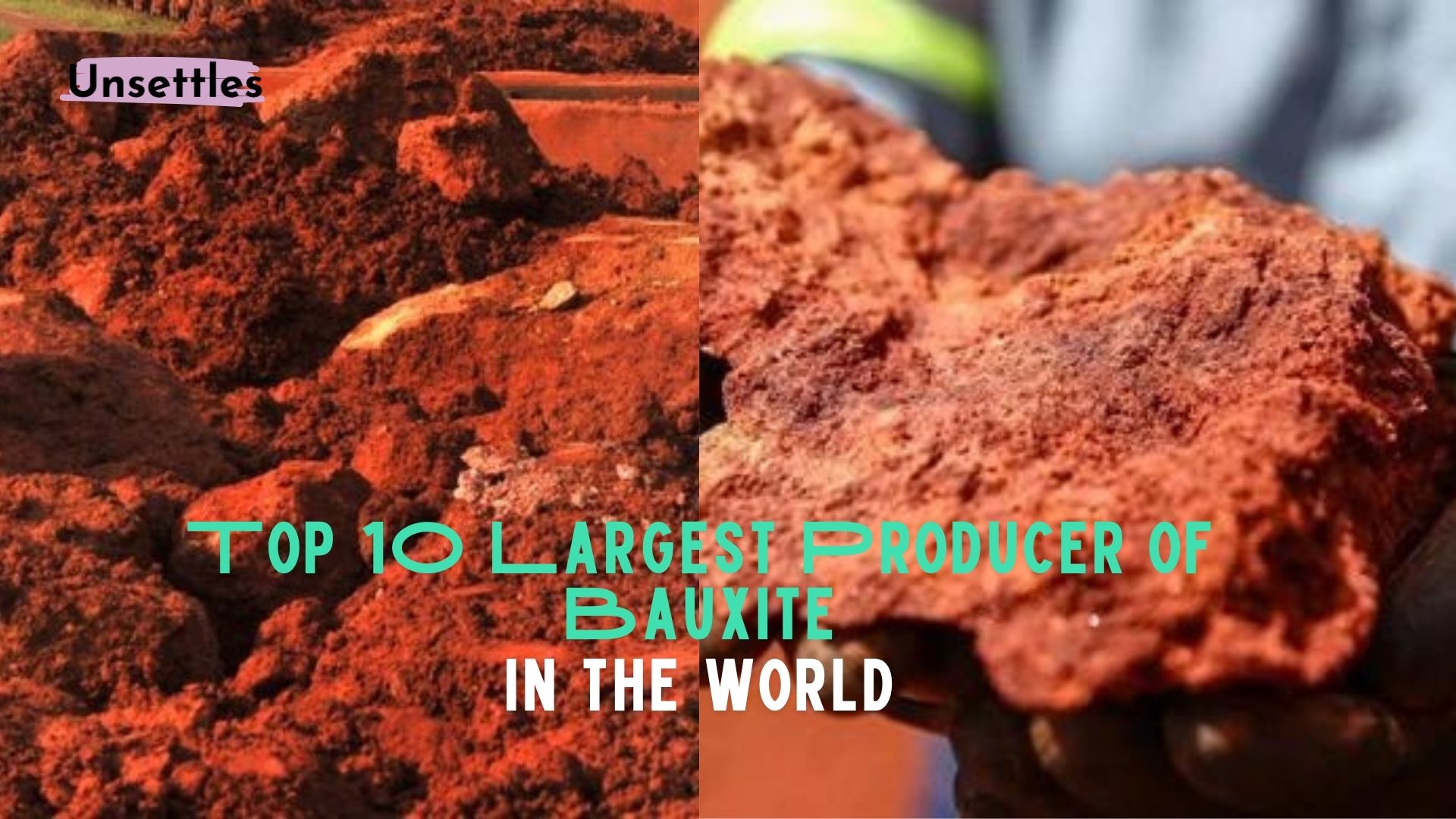Bauxite is essential for aluminum production, and as global demand for aluminum grows, so does the need for bauxite. The journey from mining raw bauxite to delivering it to industries requires expertise and precision, and many countries have mastered this process. Here’s a snapshot of the top 10 bauxite producers making a significant impact this year:
1. Australia: 110,000 Kilotons
Australia stands tall as the world’s largest bauxite producer, churning out an impressive 110,000 kilotons annually. With bauxite reserves estimated between 2.3 and 2.7 billion tons, mostly concentrated in the Darling Range of Western Australia, Australia dominates the market. Its efficient open-cut mining operations and low-cost extraction methods ensure a steady supply of high-quality bauxite.
2. Guinea: 82,000 Kilotons
In second place is Guinea, which produces 82,000 kilotons of bauxite each year. Guinea’s bauxite reserves, totaling 7.4 million kilotons, play a crucial role in the global aluminum supply chain. Major mining operations in Boké and other regions contribute significantly, with efficient rail and port facilities facilitating smooth exports to countries like China, India, and across Europe.
3. China: 60,000 Kilotons
China, a giant in the aluminum industry, produces 60,000 kilotons of bauxite. Despite having 1 million kilotons of reserves, China’s strategic approach involves mining both locally and internationally, importing from Australia, Indonesia, Guinea, and India. China’s commitment to sustainable mining practices helps balance its resource needs with environmental considerations.
4. Brazil: 35,000 Kilotons
Brazil holds the fourth spot, producing 35,000 kilotons of bauxite. With a reserve base of 2.6 million kilotons, Brazil’s mining operations, led by Companhia Brasileira de Alumínio, are highly productive. The country’s robust refining and smelting capabilities support its bauxite output and export activities, making it a key player in the industry.
5. Indonesia: 23,000 Kilotons
Indonesia, with 21 million tons of reserves, ranks fifth, producing 23,000 kilotons of bauxite. The country’s strategic location and large-scale mining operations enhance its global competitiveness. Despite challenges related to environmental management and land rights, Indonesia continues to play a significant role in the bauxite market.
6. India: 22,000 Kilotons
India, the sixth-largest producer, generates 22,000 kilotons of bauxite annually. With reserves of 660,000 kilotons, India’s extensive mining operations, particularly in Odisha, cater to its substantial aluminum production needs. The country’s diverse mining methods and efficient transportation networks support its bauxite industry.
7. Jamaica: 7,700 Kilotons
Jamaica ranks seventh with 7,700 kilotons of bauxite production. The island’s 2 million kilotons of reserves have been a vital part of its economy since the 1940s. Major mining operations in Manchester and St. Elizabeth, coupled with efficient export logistics, contribute significantly to Jamaica’s bauxite output.
8. Russia: 6,100 Kilotons
Russia produces 6,100 kilotons of bauxite, making it the eighth-largest producer. Despite having a relatively small reserve base of 500,000 kilotons, Russia’s expanding industrial relevance and significant bauxite deposits in the Caucasus and Siberia support its growing production capacity.
9. Kazakhstan: 5,800 Kilotons
Kazakhstan, with 5,800 kilotons of bauxite production, ranks ninth globally. The country’s 160,000 kilotons of reserves, primarily located in Central and Akmola regions, offer promising growth potential. While logistical and infrastructural challenges exist, Kazakhstan is actively seeking to enhance its bauxite mining capacity.
10. Vietnam: 4,000 Kilotons
Vietnam rounds out the top 10 with 4,000 kilotons of bauxite production. With a massive reserve base of 3.7 million kilotons, Vietnam’s potential in the aluminum industry is substantial. The state-owned VINACOMIN operates several large-scale open-pit mines, contributing to the country’s growing role in global bauxite production.
Conclusion
The top 10 bauxite-producing countries are making impressive strides in enhancing their mining infrastructure, ensuring efficient supply chains, and maintaining high production standards. Their combined efforts in improving shipment processes, refining techniques, and workforce capabilities have significantly boosted global aluminum production. These nations are indeed setting the bar high in the bauxite industry.
